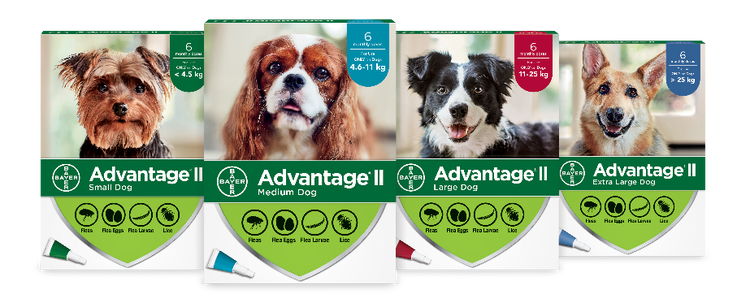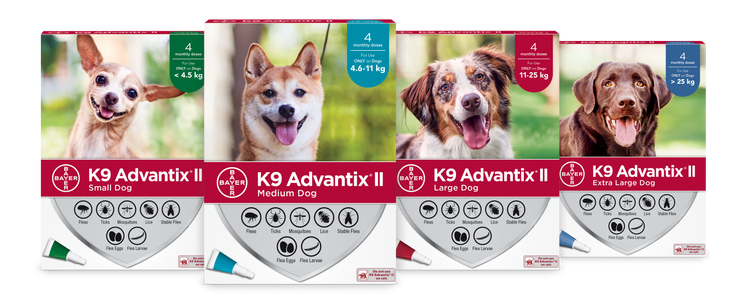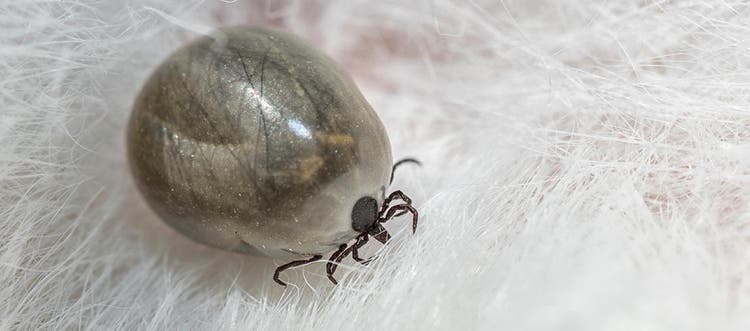As a dog owner, you have plenty of options when it comes to fighting fleas. But how do you know which one is the best flea treatment for you and your dog?
With the array of flea treatment for dogs now available, keeping your dog protected against fleas is relatively straightforward. You just need to choose which method works best for you and your pet. Use our comprehensive guide to help you decide.
Flea sprays
Pet-specific flea sprays with insecticides are applied directly to the roots of the coat to kill fleas on contact. Don’t confuse these with household flea sprays, which tackle the problem in the home but must never be used directly on pets. Check the product label first to be sure.
Pros: Sprays work quickly to kill adult fleas on dogs with a flea infestation.
Cons: The entire body of the animal needs to be sprayed, so this treatment can be more time-consuming than some of the other options. Some dogs don’t like being sprayed or being restrained while the spray is applied. As such, it can be difficult to treat the entire coat. Flea sprays are not long lasting, so this is a short-term solution that may not effectively treat the infestation.
Flea shampoos
If your dog has fleas, a special flea-killing shampoo containing an insecticide can help get rid of them.
Pros: These can be good for dogs who like baths.
Cons: Flea shampoos usually need to be left on for at least 10 minutes, and they don’t always have a lasting effect – meaning that they are a short-term solution that won’t necessarily stop your pet or home from being re-infested.
Flea combs
If you don’t want to use chemicals, you can use a fine-toothed flea comb instead. Repetitive grooming using a flea comb could help remove fleas from your dog’s coat.
Pros: Pets that love being groomed might prefer this method.
Cons: DIY dog flea treatments like this are very time-consuming and it’s difficult to remove every flea. Combing also won’t stop new fleas from taking up residence on your pet or in your home.
Topical treatments
A small pipette of liquid is squeezed onto the base of your dog’s neck or, for larger dogs, on a few spots along their back. The active ingredient is then either absorbed into the dog’s bloodstream, or spreads throughout the skin.
Pros: Some topical formulas are designed to kill fleas on contact. For instance, the active ingredient in Advantage®II and K9 Advantix®II topical treatments spread across your dog’s skin, where they are able to kill fleas through contact – so fleas don’t have to bite your pet to be killed1 . Advantage®II and K9 Advantix®II are now both available through veterinarians and other pet retail locations. K9 Advantix®II is not to be used on cats.
Cons: While topical treatments have a lasting effect against fleas, you’ll need to remember to apply the treatment when it’s due, typically monthly.
Tablets and Chews
The active ingredients in dog flea treatment pills and chews are absorbed into the dog’s bloodstream. Fleas that bite your pet are exposed to the active ingredient and killed.
Pros: Tablets and chews are usually flavoured and easy to give. The active ingredients start to work quickly.
Cons: Fleas need to bite your dog to be killed. Each tablet or chew gives varying durations of protection, which sometimes also varies with different parasites.
There are a whole range of different dog flea treatment brands and methods available, that all work in different ways. The one that’s right for you and your dog will depend on your individual dog as well as your personal preference. Speak to your veterinarian about the right flea treatment for your dog.
^See product label for details
1 Mehlhorn et al. Parasitol Res (2001) 87: 198-208 Sutton, G. P. and Burrows, M.(2011). Biomechanics of jumping in the flea. J. Exp. Biol. 214, 836-847

Advantage®II for Dogs
Advantage®II is a fast-acting flea treatment for dogs that protects against fleas, flea eggs, flea larvae and lice.

K9 Advantix®II for Dogs
K9 Advantix® II protects dogs from fleas, ticks, mosquitoes, lice, stable flies, flea eggs, flea larvae









